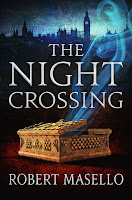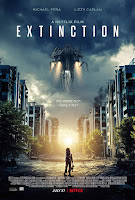Ben Fritz of the
Wall
Street Journal loves movies. He is passionate about the experience of
communally watching a film, the unique ability for artists to tell their
stories, and the Hollywood business machine behind it all. But man, he hates
franchise features. From Marvel and DC to Star Wars and Star Trek to dinosaurs
and robots, he sees these spectacles as indie film destroyers and creative
blockers. To some extent, he might be right. What Fritz seems to have forgotten
along the way, and a point that is only marginally made during the wrap-up of
his book
The Big Picture, is that movies, yes, even those about
super-heroes and Jedis, are supposed to elicit an emotional response, be that
enjoyable, fun, or even disturbing.
The Big Picture is an
important, topical,
timely read, and one that can be quite depressing at times
in regards to the state of the industry, and with that fact that he just can’t
get over that super-hero hurtle.
Fritz focuses his book on the
parallel fall of both Sony Pictures and of mid-budget adult dramas
industry-wide. Taking advantage of 2014’s hack, Fritz provides incredible
insight into the studio that, honestly, never could have happened if that hack
did not occur. The book runs with a documentary style narrative on Amy Pascal,
Michael Lynton, and Sony’s quest to remain as an actor-friendly studio in an
era where big-budget franchises quickly became the rage of the machine, and at
a time when Sony had one, single franchise, that surprisingly couldn’t compete:
Spider-Man. Fritz’s on-going commentary, about how the franchises being overseen
by the Disney umbrella (incorporating Marvel, Lucasfilm and Pixar), Warner
Bros, and Fox propelled those studios ahead of the others by incredible margins
with arguably less creativity, however, quickly becomes repetitive. He’s a
voice in the wilderness screaming for common sense and a return to artistic
measures, but one that is being smothered by the mass of fanboys, geeks,
wizards, and Disney princess consumers.
But what if today’s current state
is not all bad? Yes, studios have pared down their offerings, but what if in
doing so, they are making better films? Creative films with substance guided by
an artistic venture and not a committee? Fritz breaks down the financials of
how a film like
Steve Jobs may or may not make a profit and
expands that equation to the first
Spider-Man film by Sam
Raimi. Yet he never scores an interview with an actor or director who made it
big, and whose work benefited as a result of being in such a franchise. An
artist, like Jon Watts who, regardless of making
Cop Car, might never have achieved a grand success were it not for
Spider-Man:
Homecoming, or an actor such as John Boyega getting his huge break with
The Force Awakens.
As part of those financials,
Fritz gets into the former importance of DVD sales, and how the loss of that
income was instrumental into the disappearance of mid-range fare. VOD and
direct-release methods were discussed as alternatives, but financials on
digital purchases and rentals were not given any viable notice. And perhaps it
is still too early for analytics on such info. However, can it not be said that
the successes of the X-Men and Deadpool films can directly lead into allowing
studios, such as Fox, to release
The Shape of Water and
Three
Billboards Outside Ebbing, Missouri? Fritz only makes tangible connections.
Look, I am an indie film snob. I’m
the guy hitting film festivals to see the latest from Jim Jarmusch and Wes
Anderson while boycotting Michael Bay nonsense and Seth MacFarlane comedies. I
prefer those serious dramas that compel thought and analyzation, to experience
that fresh creative vibe. But man, the geek in me eats away at Marvel, Star
Wars and Star Trek, franchises that I will defend as much as I love
Bottle
Rocket and
Ghost Dog. I think there can be such compromise
between art and commercialism. I think that if people are going to the cinema,
even if it’s, ugh,
Sausage Party, then the medium is being
absorbed, and propagated. And that should be considered a win.
The Big
Picture is a good read and a fantastic insider’s look into the studio
system. However, the removal of the constant commentary could have reduced this
repetitive-at-times read from a full book to a powerful article in the
New
Yorker.
Many thanks to Houghton Mifflin
Harcourt and NetGalley for the advance reader’s copy. I find it deliciously
ironic that I am writing this review on the eve of possibly the greatest
franchise release of all time:
Avengers: Infinity War. I have
tickets for Saturday’s show.
As Always,
theJOE























